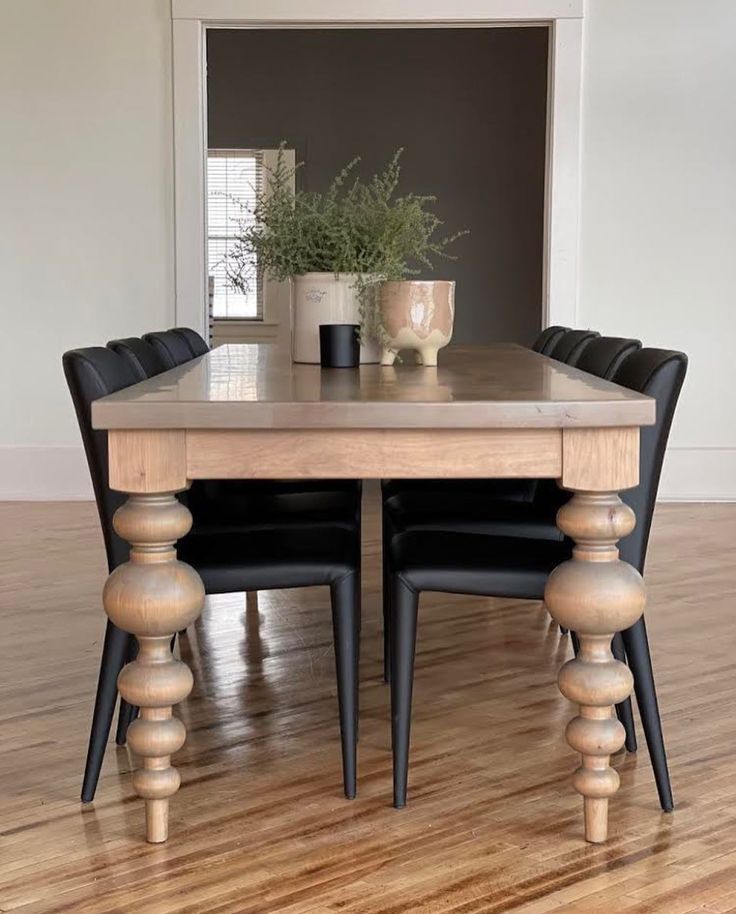From Conventional to Modern: Find the Perfect Dining-room Table Legs for Your Design
While traditional layouts such as cabriole and turned legs evoke a sense of ageless sophistication, modern designs like hairpin and geometric choices offer a chance for striking aesthetic interest. As you think about these components, the question stays: just how can you seamlessly integrate these varied leg designs to create a harmonious eating experience?
Comprehending Table Leg Styles
The selection of eating area table leg styles can significantly influence both the looks and performance of the room. Each leg style contributes one-of-a-kind visual components and practical attributes, catering to varied design choices and usage requirements. Understanding these designs is crucial for selecting the right table that lines up with your total interior layout vision.
As an example, conical legs supply a clean, timeless appearance that can improve a space's beauty, while stand bases provide stability and optimize legroom, making them excellent for smaller sized spaces. Hairpin legs, a characteristic of mid-century modern-day design, introduce a commercial style, permitting a ventilated, open feeling. Trestle legs stimulate rustic charm, offering durable assistance and a sense of timelessness.
Wood legs can bring warmth and appearance, whereas steel choices typically convey a smooth, modern vibe. Inevitably, recognizing table leg styles is vital for developing a cohesive dining location that shows individual design while ensuring functionality and convenience.
Traditional Table Leg Options
When picking dining-room table legs, standard alternatives frequently symbolize classic elegance and craftsmanship. These styles mirror an abundant heritage and a commitment to quality, making them optimal for those that appreciate classic appearances.
Among the most iconic conventional leg designs is the cabriole leg, identified by its elegant bent form. This layout often features decorative carvings and is most typically discovered in Queen Anne and Chippendale furniture. One more prominent choice is the turned leg, which boasts a series of smooth, rounded shapes that give a timeless appearance while keeping security.
Furthermore, the straight leg, while easy, offers a tough and basic structure that can blend seamlessly with a selection of tabletop designs. For those attracted to ornate outlining, claw-and-ball feet legs evoke a sense of splendour and can act as a sensational centerpiece in any type of dining space.
Lastly, stand bases, although not purely legs, offer an alternate conventional option that permits ample legroom and can be beautifully sculpted. Each of these standard leg styles contributes to the total setting of a dining-room, weding feature with visual allure.

Modern Table Leg Styles
Modern table leg designs supply a diverse variety of styles that stress ingenious materials and tidy lines. These styles often focus on functionality while offering as striking prime focus within an eating area. Minimal looks prevail, with legs crafted from products such as metal, glass, and crafted wood, which contribute to a modern and ventilated feeling.
One prominent layout is the barrette leg, characterized by its slender, conical framework that offers stability without frustrating the tabletop (dining room table legs). This style is often discovered in mid-century modern furniture and can easily complement different table shapes. One more fad is the use of geometric forms, where legs might take on unbalanced or angular forms, adding aesthetic interest and a touch of creativity

Blending Styles for Unique Spaces
Frequently, home owners look for to produce special dining spaces that reflect their individual design by mixing different design elements. This strategy enables the unification of diverse aesthetic appeals, leading to a harmonious yet distinct setting. For example, combining a rustic wooden table with sleek, contemporary metal legs can develop an appealing comparison that boosts the space's overall allure.
In addition, integrating vintage table legs with modern tabletops can evoke a feeling of history while keeping Our site a contemporary sensibility. Such mixes not only display individual preference but additionally encourage creative thinking, enabling homeowners to curate an area that feels both individual and welcoming.
Color plays an essential duty in this blending procedure; picking table legs that match or comparison with the existing color pattern can improve aesthetic interest. Whitewashed legs can soften the daring of a dark table surface, producing a well balanced aesthetic.
Tips for Selecting the Right Legs
Selecting the right table legs is essential for attaining both functionality and aesthetic allure in your dining area. Begin by taking into consideration the overall style of your area. Conventional settings take advantage of legs that include intricate carvings or transformed designs, while contemporary rooms may require streamlined, minimalist styles.
Next, evaluate the elevation and security of the legs. dining room table legs. Basic read table vary in between 28 to 30 inches in height, so guarantee the legs enhance this dimension for convenience. In addition, robust products, such as wood or steel, can enhance stability and longevity
Assess the leg shape also-- alternatives include straight, tapered, or pedestal styles. Straight legs provide a traditional appearance, while conical legs can include a touch of sophistication. Pedestal bases give enough legroom and are ideal for smaller spaces.
Conclusion
In summary, selecting the ideal eating area table legs calls for mindful factor to consider of both standard and contemporary styles. By integrating leg design, height, and product with the general décor, a natural and inviting atmosphere can be accomplished.
The variety of eating space table leg designs can dramatically influence both the looks and functionality of the room. Eventually, recognizing table leg styles is important for developing a cohesive eating location that mirrors individual design while ensuring practicality and comfort.One of the most renowned traditional leg designs is the cabriole leg, identified by its stylish bent form. Straight legs use a traditional look, while conical legs can add a touch of beauty.In get more recap, selecting the perfect eating space table legs needs mindful consideration of both traditional and contemporary designs.